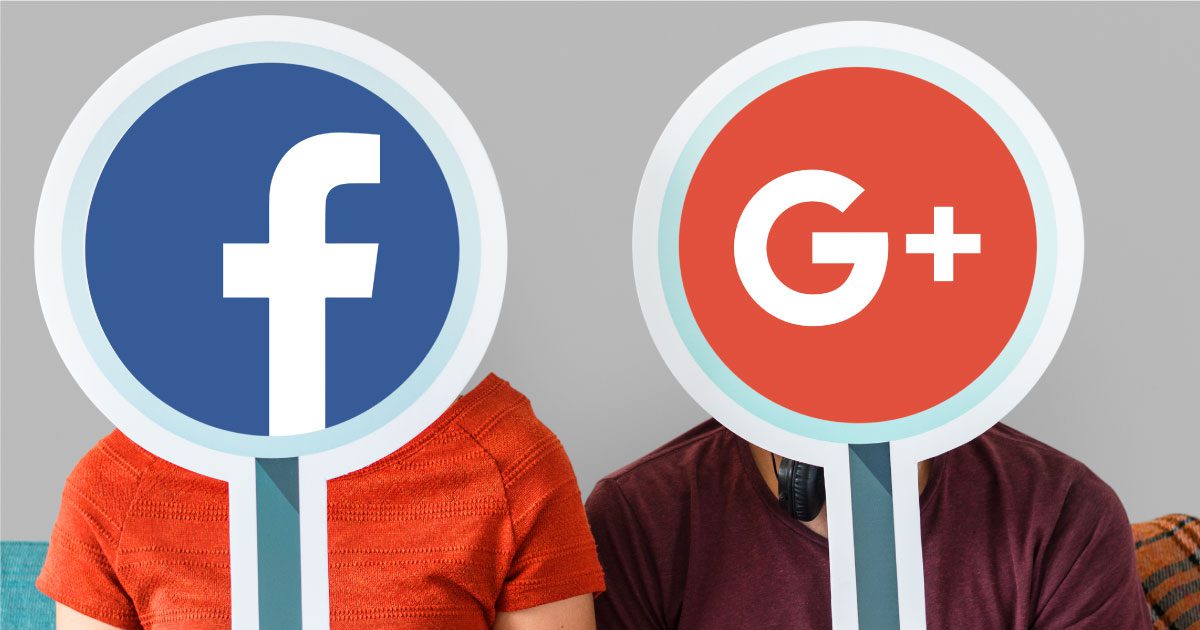Introduction
In the digital marketing landscape, pay per click (PPC) advertisement is undoubtedly one of the fastest ways to get results, reach ideal customers, enhance visibility for your brand and increase returns on investment and conversion rates in the shortest possible time.
There are many paid social and search platforms that offers opportunities for paid advertising and among them are Google ads, Meta ads, Bing ads, LinkedIn ads, Amazon ads, Yelp ads, Etsy ads and many more. Of these, Google ads and Meta ads stands out as more potent platform to reach target audience. When it boils down to which is better, it is neither here nor there.
Although they are different in some areas, they offer basically similar benefits and can complement each other for outstanding results. However, choosing which platform to use between the two can be a bit overwhelming hence this article.
We will delve into the world of these two pay per click advertising platforms, getting down to the nitty gritty of both domains including their features, advantages, how they work, how and when to use them.
Google Ads, what does it entail?
Formerly known as Google AdWords, Google Ads is one of the most well-known if not the most popular PPC advertising platforms in the world with over 2.4 million searches daily. It allows advertisers to bid ad placements that is based on keywords and target audience criteria and pay a fee each time their ad is clicked on. Google ads formats come in the form of text-based search, display, video and shopping ads which appear on websites part of the google display network. By taking into consideration the ad's bid and quality score, Google conducts an auction on the bids to choose which ads show up on the search results page when a user types a search query related to the advertiser's chosen keywords.
Key components of Google Ads
Businesses can successfully build, manage, and optimize their advertising campaigns with the help of Google Ads' extensive feature set. Google Ads' primary features include things like:
Ad campaign: Advertisers might organize their advertising efforts into different ad campaigns depending on distinct objectives, goods, or services. Every campaign may have a customized configuration, spending limit, and targeting choices.
Ad groups: Advertisers can build ad groups, which are collections of closely connected keywords and advertisements, within each campaign. Within a campaign, ad groups assist in organizing and focusing on particular themes or categories.

Keywords: Advertisers use pertinent keywords that cause their adverts to appear when users search for those particular terms on Google. For establishing ad relevancy and causing ad appearances, keywords are essential.
Ad formats: To meet various advertising goals, Google Ads offers a range of ad forms, such as text ads, picture ads, responsive ads, video ads, and shopping ads (for e-commerce companies).
Targeting options: Advanced targeting options are provided by Google Ads, enabling advertisers to specify their target market based on variables including location, demographics, interests, and user behavior. Ads are shown to the appropriate individuals at the right time thanks to this exact targeting.
Ad Extensions: By adding extra information like call buttons, location data, sitelinks, and structured snippets, ad extensions increase the functionality of advertisements. Ad extensions improve ad visibility and give users more pertinent data.
Budget and Bidding: Google Ads uses a pay-per-click (PPC) model, and advertisers can specify daily or monthly budgets for their campaigns. To decide the highest price they are willing to pay for each click, advertisers place bids on keywords.
Performance metrics: With Google Ads, advertisers can monitor the effectiveness of their campaigns in real-time thanks to the precise performance analytics that are provided. Click-through rates (CTR), conversion rates, cost per click (CPC), and return on investment (ROI) are important performance indicators.
Why use Google Ads?
Using Google Ads to market products and services results in a number of benefits for business and these benefits include;
Higher Visibility: With over billions of queries performed daily by users, Google is the most widely used search engine in the world. Businesses may increase their online visibility and brand awareness by using Google Ads to ensure their ads show up extensively on search engine results pages (SERPs) when keywords related to the brands are searched.

Targeted advertising: Advertisers have the opportunity to concentrate on specific demographics, regions, and hobbies with Google Ads. Ads are more likely to be noticed by consumers who are actively looking for products or services associated with the business through smart targeting.
Cost-effective: With Google Ads' pay-per-click (PPC) structure, marketers only pay when a user clicks on their advertisement. Using this economical tactic, businesses may control their advertising expenditures and devote resources to the campaigns that yield the best results.
Measurable Results: Google Ads offers thorough performance analytics that let marketers monitor the efficiency of their campaigns in real time. Conversion rates, ROI, and other key metrics like click-through rates (CTR) and ROI assist businesses in evaluating the efficacy of their advertising campaigns and make data-driven adjustments where needed.
Quick and flexible: Google Ads campaigns may be created and launched quite rapidly. Ad wording, keywords, and targeting options can all be changed at any time by a business, allowing for flexibility and responsiveness to market developments and consumer behavior.
Variety of Ad forms: Text advertising, display ads, video ads, and shopping ads are just a few of the several ad forms that Google advertising offers. This variety enables companies to select the best ad format for their advertising goals and target market.
Reach Across Devices: Users on computers, laptops, smartphones, and tablets can be reached by Google Ads. Businesses are able to interact with people at many points in the customer journey thanks to this multi-device strategy.
Drawbacks in using Google Ads
Despite its numerous advantages, businesses still face some setbacks when using Google ads. In highly competitive industries, several companies may bid on the same keywords, raising prices and making it difficult for smaller companies to compete successfully. Ad weariness, where users stop responding to the same commercials repeatedly, can result from an industry's over advertising. It is difficult to establish a strong social presence on Google Ads because of the lack of social interaction present on platforms like Facebook.

Facebook (Meta) Ads, what do they entail?
As a paid social platform, Facebook or Meta Ads is the leading social media platform for advertising and reaching target audience. The targeting options available through Facebook (Meta) Ads are unmatched. Advertisers have the option of focusing on audiences based on their demographics, interests, and behaviors, as well as on bespoke and lookalike audiences. This enables companies to identify their target clients and present highly relevant ad material.
Features of Facebook Ads
just like Google Ads, Facebook (Meta) Ads provide an array of features to help business advertise and successfully reach their target audience. The features include:
Ad campaign: Advertisers can design a variety of ad campaigns to meet a variety of goals, including brand exposure, website traffic, lead generation, and app installs.
Ad Goals: Facebook Ads include a wide range of campaign goals, such as Page Promotion, Post Engagement, Website Clicks, Lead Generation, Video Views, and more. Each target is intended to accomplish a distinct advertising objective.
Ad formats: Facebook Ads allow a wide range of ad styles or formats to match diverse marketing objectives and creative interests. Images, carousels, videos, slideshows, collections, and other ad types are among these forms.
Placement Options: Facebook Ads can be presented in a variety of locations within the Facebook family of apps, including Messenger, Audience Network, Instagram Feed, and Instagram Stories. Advertisers have the option of selecting specific placements for their adverts either manually or automatically.
Ad scheduling: To maximize campaign performance and budget allocation, advertisers can plan their commercials to run at specified times or days of the week.
Budget and bidding: Advertising budget and bidding choices include cost per click (CPC), cost per thousand impressions (CPM), and cost per conversion (CPA). Advertisers can specify a daily or lifetime budget for their campaigns.
The benefits of using Facebook Ads
Increased Audience Reach: With billions of active users monthly, Facebook is the most popular social media platform in the world. Businesses may use Facebook Ads to reach a wide range of audiences and tap into this enormous user base, boosting their brand's visibility and potential client base.
Precise Targeting Options: Facebook Ads offer sophisticated targeting options that let companies identify their target market based on characteristics like connections, hobbies, and habits. Due to the precise targeting, users who are more likely to be interested in the promoted goods or services will see their adverts.
Multiple ad formats: these are supported by Facebook advertisements, including image, video, carousel, slideshow, and collection ads. Due to the variety of ad formats available, businesses may select the one that best suits their advertising goals and creative resources while also being the most engaging.
Cost-Effectiveness: With the flexibility to create daily or lifetime budgets and manage bidding options, Facebook Ads provide a cost-effective advertising solution. Based on performance measurements, advertisers can strategically deploy their budgets and maximize their investment.
Campaign Objectives are Flexible: Facebook Ads offer a variety of campaign goals, including brand exposure, website traffic, engagement, lead generation, app installs, and conversions. Businesses can decide which objective best fits their marketing objectives.
Challenges in using Facebook Ads
While Facebook Ads (Meta Ads) provide many benefits, there are also some possible drawbacks and difficulties. Users may become less responsive to commercials as a result of ad weariness, while organic reach decreases. Due to the variety of users, it can be difficult to estimate ad performance and expenses, and audience quality can be problematic.
Limited ad placement control may cause the advertising to appear in fewer relevant locations, and user trust may be impacted by privacy issues. Facebook's social character might constrain commercial aim, and there might be content limits on ads. If content does not adhere to Facebook's regulations, delays or rejections may result from the tight ad approval procedure. Ad reach and visibility can be impacted by ad blockers, such as software or browser extensions, which lowers campaign efficacy.
How to choose the right platform to use
Define Your PPC Objectives: Begin by defining your PPC goals in detail. Do you want to advertise a new product, raise sales, create leads, increase brand recognition, or increase website traffic? Knowing your objectives will enable you to choose the platform that best supports them.
Discover and investigate the PPC platforms that are available: Between Google Ads and Facebook Ads (Meta) look for the one that best suits your marketing needs as each platform has its own audiences, target market, ad formats, and strong points.
Know your target audience: Understand the demographics, interests, activities, and online habits of your target audience. distinct PPC platforms serve distinct user bases and provide diverse targeting options. Select a platform that enables you to successfully connect with and engage your ideal clients.
Examine Platform Reach: Take into account the audience's size and reach. For widespread awareness efforts, a larger user base may be advantageous, whereas a smaller, more specialized platform may be better for focusing on particular target demographics.
Analyze Ad Formats: Look over the ad formats that are offered on each platform and choose the one that best complements your good or service. While Google ads are more text-focused, Facebook Ads specialize at visual ads like photos and videos.
Budget and Cost-Effectiveness Analysis: Examine your PPC budget and take each platform's cost-per-click (CPC) or cost-per-impression (CPM) into account. Choose a platform that offers a reasonable fee per click, falls within your budget and offers a respectable return on investment (ROI), as other platforms may have greater charges.
Consider Mobile Users: With the rise in mobile users, be sure the PPC platform you select can effectively reach them. This way you can increase your reach and visibility.
Test and Measure: Launch first test campaigns on several platforms with a limited budget at first. To find out which platform best meets your specific goals, evaluate the outcomes and performance measures. Afterwards, continuously evaluate the efficacy of your PPC campaigns and make data-driven adjustments as necessary. To increase the effectiveness of your ads, test out various ad creatives, targeting options, and bidding tactics.
Consider Cross-Platform Integration: To develop a cohesive marketing plan, take into account merging your PPC efforts across platforms if your audience is active on various platforms.
Optimize landing pages: Ensure that your landing pages are very pertinent to your ad copy and keywords by optimizing them. To increase conversions, optimize them for quick loading times, mobile responsiveness, and a distinct call to action.
Conclusion
In conclusion, robust pay-per-click (PPC) advertising platforms such as Google Ads and Facebook (Meta) Ads are both available and high in demand on the market. They are leaders when it comes to paid search and paid social advertising. However, each has distinct advantages and disadvantages and can be used together complementarily or separately on their own. The choice between the two platforms should be made depending on your company's goals and objectives, target market, financial constraints, and creative needs. Businesses can effectively utilize online advertising to expand their brands and accomplish their goals in the dynamic digital landscape by carefully examining these elements and putting best practices into place.



